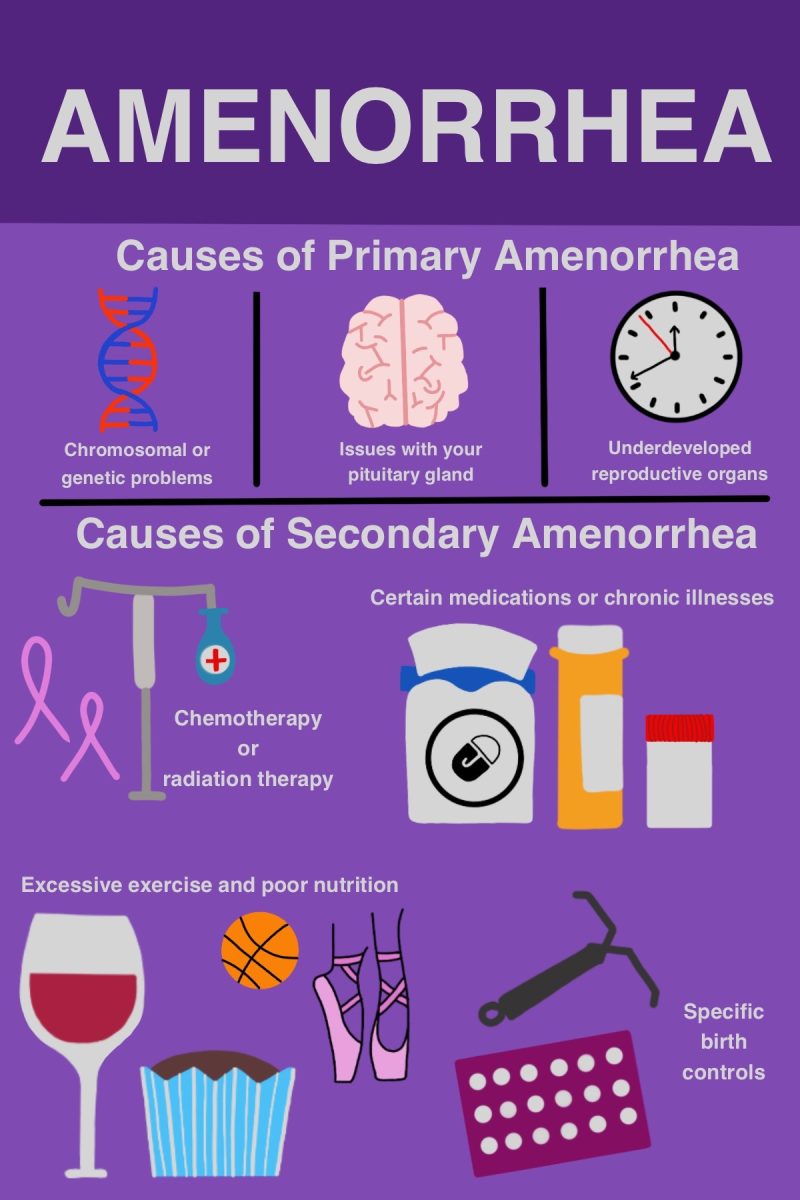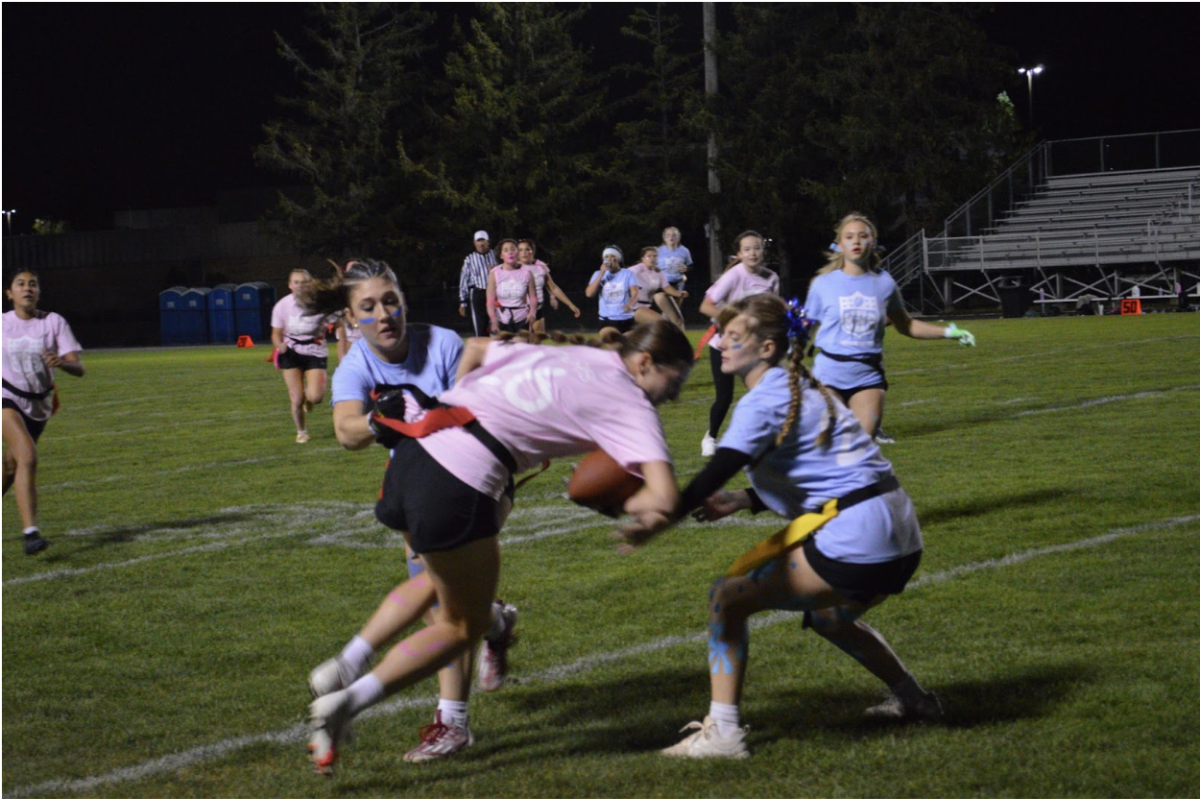Imagine being a female cross country runner who makes sure to eat healthily, train daily and get enough sleep. You feel like you’re in the best shape of your life, but then you realize you’ve missed your period for the last three cycles.
Amenorrhea, defined by the Mayo Clinic as the absence of menstruation, is common in athletes who exercise extensively, such as gymnasts, dancers and cross country runners. Although it is a common occurence in female athletes, it is not healthy and shouldn’t be treated as though it is normal.
Athletes experiencing period loss may feel scared by the foreign name, but it is not a disease, rather a symptom of a likely curable condition. Treating amenorrhea could be as simple as adjusting behaviors, but it could also require medication or surgery.
“I’d typically have the athletes document or journal their day in relation to food habits, training habits, sleep habits and more, and based on symptoms and other factors would refer them to see a physician,” Kaneland athletic trainer Maggie Walker said.
In the case of athletes specifically, it is important that they seek medical help when they notice the loss of their period for more than three cycles. Medical professionals can then give their diagnosis of what could be causing this and what steps the athlete can take to recover. Although amenorrhea is not life threatening, it can cause future conditions and complications if not treated.
According to the Mayo Clinic, complications can include infertility, osteoporosis, cardiovascalur disease, pelvic pain and psychological stress.
Primary amenorrhea occurs when an individual reaches the age of 15 and has not had signs of a menstrual cycle occurring. This type of amenorrhea can occur due to chromosomal abnormalities, genetic problems, pituitary gland issues or underdeveloped reproductive organs.
Secondary amenorrhea is when a person misses their menstrual period for three or more cycles after previously having a regular menstrual period. This type can occur because of pregnancy, some birth controls, chemotherapy or radiation therapy, certain medications, stress, poor nutrition or excessive exercise.
“When I was 13, [my parents] had concerns because of my thyroid,” senior and dancer Hanna Williams said. “I went to a doctor, and I went for four years because I didn’t get my period until junior year for even the first time. I went to multiple doctors, and they ended up saying that it was because I was so active.”
It can be daunting when it feels like there is no one to talk to about this subject, and it may even feel embarrassing for some to bring it up to their family or friends. Despite what might seem abnormal, amenorrhea affects 1 in 25 women, according to The American College of Obstetricians and Gynecologists.
“It was frustrating because I didn’t know when [my period] would happen, and you don’t want the embarrassment of bleeding through,” senior and dancer Annabelle Lillie said.
Some athletes might feel as if their condition is unrecognizable and that the important figures in their lives, like teammates, parents and physicians, will overlook their symptoms.
“I think that this topic has been kind of pushed to the side and has been referred to as ‘normal,’” Walker said. “However, it is not normal and could cause several problems later, such as poor bone accrual and low bone mineral density.”
According to Oxford Academic’s Journal of Clinical Endocrinology & Metabolism, secondary amenorrhea can lead to estrogen deficiency in approximately 55% of affected women and premature ovarian failure due to autoimmune disease.
For teens, these problems might not occur right away, but their chances will increase each year if there are no preventive measures taken, such as seeing a physician or slowing their excessive exercise.













